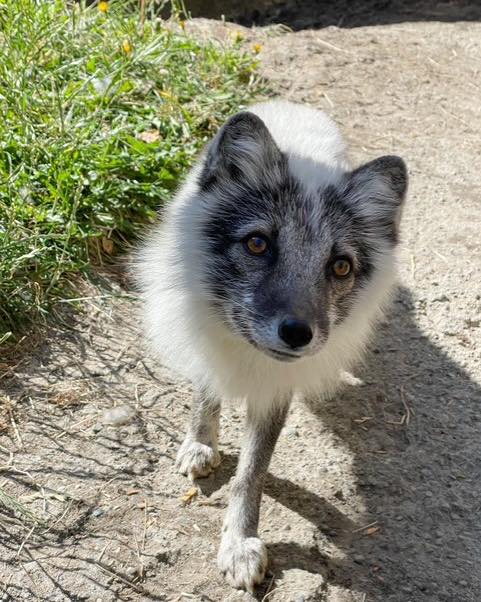- The seasonal fur color change of Arctic foxes and its significance
- Adaptations of Arctic foxes to their harsh environment
- Role of Arctic foxes in the tundra ecosystem
- Conservation challenges facing Arctic foxes
- Efforts in wildlife management and conservation for Arctic foxes
Arctic foxes are remarkable mammals known for their ability to adapt to extreme conditions. One of the most fascinating aspects of Arctic foxes is their seasonal fur color change. During summer months, they develop a brown-grayish hue that allows them to blend seamlessly with the barren tundra. This adaptation is essential for hunting and evading predators. In contrast, during winter, their fur transforms to a fluffy white coat that mirrors the surrounding snow and ice. This striking change not only provides camouflage but also highlights the adaptability of these creatures to varying weather and landscape conditions.
The fur color change in Arctic foxes is driven by environmental cues such as temperature and daylight hours. Photoperiodism plays a considerable role in triggering this transformation. The longer daylight experienced in summer prompts the production of different color pigments in the hair follicles. This physiological response is crucial for survival. Being able to effectively camouflage ensures the fox can hunt small mammals like lemmings and voles, which remain active even when the landscape is covered in snow.
Adaptations of Arctic foxes extend beyond fur color. These animals are stout and compact in build, which reduces heat loss—a critical feature given their frigid habitat. Their small ears minimize heat radiation, while their thick fur provides insulation against the harsh cold. The footpads of Arctic foxes are covered in fur, giving them traction on ice and snow. Moreover, their keen sense of hearing allows them to detect sounds beneath the snow, enabling them to locate prey.
Arctic foxes play a significant role in their ecosystem. As opportunistic feeders, they consume a variety of foods, including small mammals, birds, fish, and carrion. This dietary flexibility makes them an integral part of the food web in tundra regions. By controlling the populations of small prey species, Arctic foxes help maintain balance in the ecosystem. Furthermore, they are scavengers, often feeding on leftovers from other predators, such as polar bears. This scavenging aspect illustrates their adaptability and resourcefulness in a challenging environment.
Despite their remarkable adaptations, Arctic foxes face numerous challenges. Climate change has resulted in habitat warming, affecting the availability of food and altering ecosystem dynamics. As their habitat continues to change, Arctic foxes are forced to compete with larger predators, such as red foxes, which are encroaching into their traditional territories. This competition can lead to decreased populations of Arctic foxes, as they struggle for resources.
Human activities also pose significant threats. Habitat destruction due to industrial development and oil extraction can disrupt the delicate balance of the tundra ecosystem. Pollution from waste and chemicals can further impact the health of wildlife in these regions. Additionally, climate change impacts food availability, affecting the reproductive success of Arctic foxes.
Conservation efforts are essential in protecting Arctic fox populations. Various organizations focus on research and habitat preservation, aiming to mitigate the effects of climate change. By studying the behaviors and needs of Arctic foxes, researchers can develop effective management strategies. Local communities are often engaged in conservation initiatives, promoting ecological awareness and sustainable practices. These grassroots movements contribute to the overall success of conservation strategies.
In zoos and wildlife reserves, efforts to educate the public about Arctic foxes are crucial. Educational programs often highlight the importance of conserving these animals and their habitat. Providing platforms for learning can help raise awareness of the delicate balance in the tundra ecosystem. Additionally, breeding programs can play a role in maintaining healthy populations, as they create genetic diversity that might be lost in the wild.
Wildlife management also includes monitoring populations and habitats. Using GPS tracking, scientists can gather valuable data on movement patterns, breeding habits, and population dynamics. This information plays a vital role in developing effective conservation strategies. Protecting and understanding Arctic foxes is essential, not only for their survival but also for the preservation of the tundra ecosystem.
Collaboration among governments, non-profits, and local communities can amplify conservation efforts. Policies that protect natural habitats from industrial activities can significantly impact fox populations. Integrating scientific research with public awareness campaigns can foster a collective responsibility for preserving these animals and their ecosystems.
Engagement with Indigenous communities adds another dimension to conservation. Indigenous knowledge systems offer insights into sustainable practices that have existed for generations. By integrating traditional ecological knowledge with modern science, conservationists can develop holistic approaches that respect both the land and its inhabitants.
Understanding the significance of Arctic foxes can inspire future conservationists. Their resilience in the face of change serves as a testament to the adaptability of wildlife. In educating the public, we can encourage stewardship of the environment, ensuring Arctic foxes continue to thrive in their habitats.
Efforts must also focus on addressing larger environmental concerns, such as climate change. Advocacy for policies that reduce greenhouse gas emissions can play a crucial role in altering the trajectory of global warming. Protecting the Arctic environment not only benefits Arctic foxes but also has broader implications for biodiversity and ecosystem health in other regions.
The multi-faceted approach to Arctic fox conservation underscores the interconnectedness of various environmental issues. Saving one species often requires addressing broader ecological challenges. Educational initiatives focused on the tundra ecosystem can galvanize support for Arctic fox conservation, fostering a sense of responsibility for the natural world.
In conclusion, Arctic foxes are extraordinary animals adapted to survive in some of the harshest conditions on Earth. Their seasonal fur color change serves as a critical adaptation for camouflage, while their opportunistic feeding habits highlight their role within the tundra ecosystem. As they face mounting pressures from climate change and human activities, conservation efforts are paramount. Engaging communities, leveraging scientific research, and fostering education can build a sustainable future for Arctic foxes and the ecosystems they inhabit.
*****
Source Description
Hi Freya! 👋 During summer, an Arctic fox’s fur changes to a brown-grayish hue to camouflage with the barren tundra in the wild. They sport a fluffy white coat in winter to blend in with the snow and ice. This versatility allows the fox to adapt to its surroundings throughout the year.
📸: Keeper Kacie


